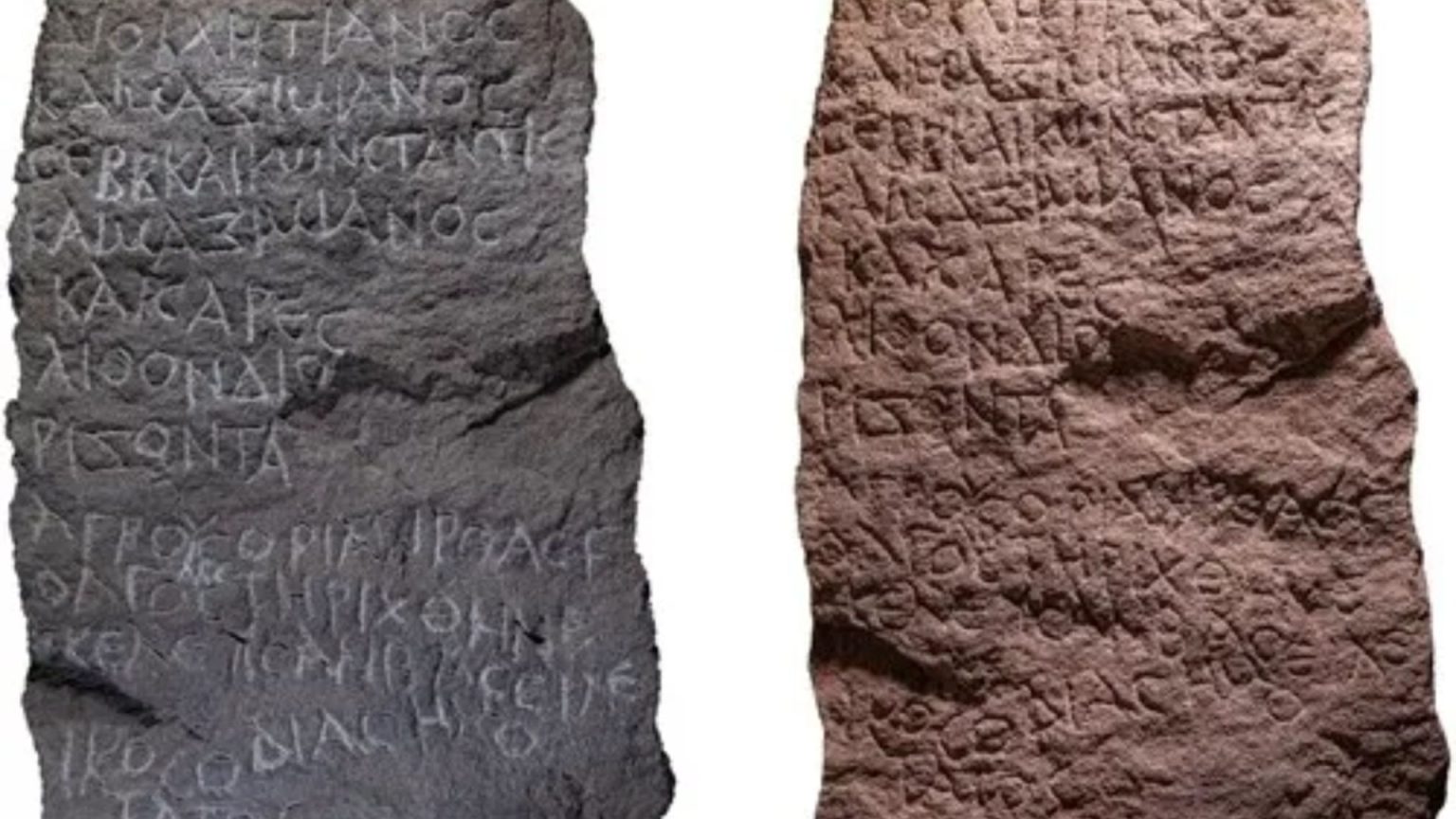A Roman Boundary Stone Unveils Lost Towns and Imperial Reach in Biblical Galilee
A remarkable discovery in Israel’s Upper Galilee region has unveiled a volcanic stone slab, inscribed with Ancient Greek, that promises to reshape our understanding of the Roman Empire’s influence and administrative control in the area. Dating back nearly 1,700 years to the reign of Emperor Marcus Aurelius Alexander, the stone served as a boundary marker, demarcating territories and settlements under Roman jurisdiction. Its significance lies not only in its age but also in the revelation of two previously unknown towns, Tirathas and Golgol, placing them firmly within the Roman Empire’s grasp. This finding extends our knowledge of the empire’s reach, demonstrating its meticulous administration even in distant territories like the Galilee. The stone’s inscription also references four Roman governors, highlighting the intricate administrative hierarchy employed by Rome to manage its vast domain.
The discovery of the boundary stone offers a tangible link to the lives of individuals who inhabited the region nearly two millennia ago. It sheds light on ancient land ownership practices, taxation systems, and the complexities of navigating life under Roman rule. The stone serves as a poignant reminder of the empire’s enduring impact on the region, where residents, subject to taxation by a power seated thousands of miles away, left behind lasting traces of their lives interwoven with the archaeological record. These remnants offer valuable glimpses into the daily realities, challenges, and enduring legacies of the communities that thrived in this historically significant area.
The unearthed names of Tirathas and Golgol hold particular intrigue for scholars, as they are entirely new additions to the historical lexicon. Researchers have drawn linguistic and cultural connections between Golgol and prominent Biblical locations like Gilgal, mentioned in the Book of Joshua as a key Israelite encampment, and Golgotha, the site of Jesus’ crucifixion. These intriguing links raise questions about the potential historical and cultural significance of the newly discovered town, inviting further exploration into its possible role within both Biblical and Roman narratives. While the location of Tirathas has tentatively been linked to ruins documented in the late 19th century on the Lebanese side of the border, the search for Golgol continues, focusing on a round hill near Abel Beth Maacah as a potential site.
The boundary stone joins a collection of over 20 similar artifacts discovered in the northern Hula Valley, all dating to a period of intensified Roman administrative control. These markers served a multifaceted purpose: defining land ownership, streamlining tax collection, and reinforcing imperial authority. The stone’s location in Galilee, a region where Biblical history intertwines with Roman governance, underscores the interconnectedness of ancient geography, economy, and culture. It provides a unique lens through which to examine the intricate relationships between local populations, their land, and the overarching Roman administration that shaped their lives.
The Galilee region, renowned as the backdrop for many of Jesus’s miracles, including walking on water, adds another layer of significance to the discovery. The stone’s presence in this historically charged area further emphasizes the confluence of religious and imperial influences that shaped the region’s identity. The discovery underscores the rich tapestry of history woven into the fabric of the Galilee, where remnants of Roman administration stand alongside sites of profound religious significance. It highlights the enduring power of archaeological discoveries to illuminate the complex interplay of different cultures and empires that have left their mark on this historically rich region.
This recent find follows other remarkable discoveries in the region, including a 1,500-year-old amulet known as "Solomon’s Seal," believed to have offered protection against evil spirits, and a 3,000-year-old shrine sealed up by ancestors of Jesus, offering a glimpse into ancient religious practices. These discoveries, taken together, paint a vivid picture of the Galilee’s rich historical and cultural heritage, showcasing the enduring legacy of ancient civilizations that once thrived in this area. They provide invaluable insights into the lives, beliefs, and administrative structures that shaped the Galilee’s unique identity through centuries of change and influence.











